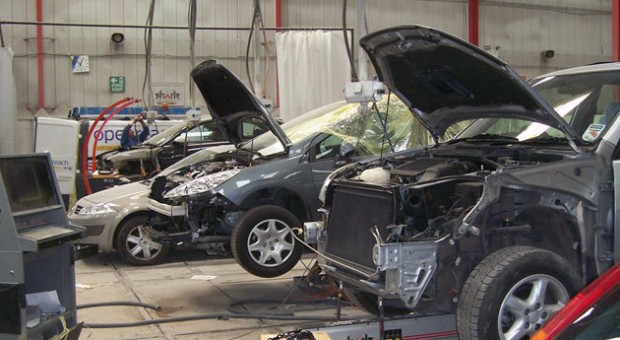
Car maintenance is essential to keep your vehicle running well at all times. Fortunately most essential car repairs are easy to do and don’t require a lot of time or equipment.
Here are six car repairs you can do right at home.
To do these repairs, you should be sure to have:
● A jack
● Jackstands
● A set of automotive wrenches
● Pliers (if your car’s fuel filter is held in place with clamps)
● A ratchet wrench
● A fuel filter appropriate for your car
● Brake pads for your vehicle
● Spark plugs
● A windshield repair kit
● Power steering fluid
● Transmission fluid
● A syringe, gear oil pump or turkey baster
● A drain pan
Note: You and your clothes will likely become dirty during these repairs. You may also lack the physical strength to do some of the tasks. Be sure to have access to knowledgeable help if needed.
1. Replace fuel filter (Disconnect the car’s battery cables before proceeding.)
If your fuel filter is located in the carburetor (on GM and some other models): Open the fuel line nut with a wrench while using another wrench to hold the fuel-inlet fitting (next to the nut) in place. As nut loosens, the filter and the adjacent coil spring will come out. Catch them and discard the filter. Replace the spring and the new filter. Re-insert the fitting,then the fuel-line. Use the wrenches to tighten the fuel-line.
If the filter is in the fuel line, use a wrench (or special pliers if the filter is held in place with clamps rather than a nut) to loosen the connection between the filter and the fuel line.
Gently work the filter free from the fuel line and replace with a new filter. Reconnect the nuts or clamps. Clean up any spilled gas.
2. Replace brake pads
Take off the hubcap or tire cover and loosen the lug nuts. Jack up the car, inserting the jack stand under the car’s frame before lowering the car so it rests on the jack stand. Remove the remaining lug nuts and the tire.
There are two sliding bolts that hold the brake caliper to the wheel. Find them and remove the lower one. The caliper will pivot upward. (Note do not disconnect any lines or hoses.) Take off the retaining clips and slide the old brake pads out, replacing them with the new pads.
There should be new clips to accompany the pads: snap the new pads in place. Replace the sliding bolt, the tire and the lug nuts, then lower the car and replace the hubcap/tire cover. Repeat as necessary for the other brake pads.
3. Replace spark plugs (match them to the existing brand and model for your car)
Tape labels to the spark plug cables before removing them. Grasp them by the nipple end, twist and pull up without pulling on the wire. Us a ratchet wrench and a spark plug socket to remove the plugs.
Apply a thread cleaner to the threads of the hole where you will insert the new plug. Use a spark-plug gauge to adjust the gap between the electrodes of the new plug (the owner’s manual will tell you the proper gap size). Thread the plug until is properly seated and use the ratchet wrench to tighten it. Push the terminal wire onto the nipple. Remove the labels.
4. Repair the windshield
Remove loose glass from the chipped area with a razor blade. Wash the area with soap and water and use a clean cloth to wipe denatured alcohol around the area. Once the area is completely dry, apply the adhesive from a windshield repair kit (a syringe usually comes in the kit).
Leave the syringe in the adhesive and activate the plunger several times to remove air pockets. Make sure all air bubbles are gone. Once the adhesive is dry, use a razor blade to gently remove any minor bumps.
5. Flush the power steering
Jack up the front end of your car. Use a syringe, gear oil pump or even a turkey baster to remove fluid from the reservoir. Fill the reservoir so that the power steering fluid level is between the minimum and maximum marks on the dipstick.
Replace the reservoir cap. Start the car and let it run for a few minutes. Repeat the process approximately six times until two quarts of power steering fluid have been put through the system.
6. Replace transmission fluid
Raise the car with the jack and support it on jack stands. Place a drip pan under the transmission. Use a wrench to remove the transmission drain bolt. Drain the old transmission fluid into the drip plan. Replace the bolt. Lower the vehicle to from the jack stands. Open the hood and remove the transmission dipstick. Insert a funnel and use it to pour in transmission fluid. Check the fluid level occasionally with the dipstick. Stop filling when the dipstick measures full.
Start the engine and let it run for several minutes. Move the gear selector through all speeds while pressing the brake pedal. Turn the engine off and check the transmission fluid level on the dipstick to ensure it is full.
Author Bio:
Sandra, is a professional writer. She specializes in Automotive niche. If you need to know more about car maintanance and repair for your car, you can visit ToyotaExpert.com and Frank Goodwin Auto Repair.




















